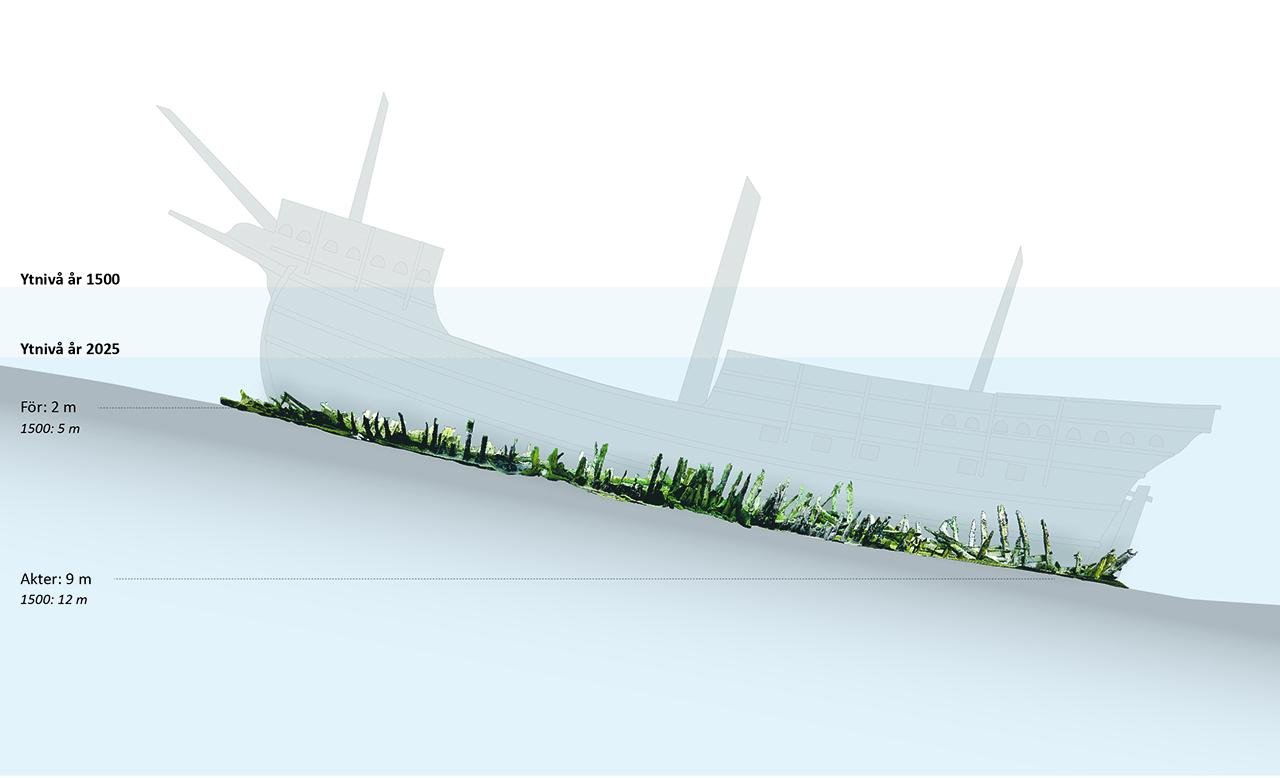Maritime archaeologists from the Museum of Wrecks (Vrak) in Stockholm have identified a shipwreck off Sweden’s coast that may be the oldest confirmed carvel-built vessel in the Nordic region. Lying beneath Landfjärden’s waters south of Stockholm, Wreck 5 is believed to have been built in the 1480s, perhaps as early as the 1460s. It sheds new light on the transitional phase from clinker-built ships, characteristic of the Viking Age, to carvel-built ships, which allowed for stronger and much larger vessels.
 Illustration of Wreck 5. Credit: Alexander Rauscher & Jim Hansson, Vrak Museum
Illustration of Wreck 5. Credit: Alexander Rauscher & Jim Hansson, Vrak Museum
Museum curator and project leader Håkan Altrock emphasized the significance of the find, noting, “This ship represents a fascinating link between medieval and modern shipbuilding. It has the potential to provide us with valuable new insights into an important period in Sweden’s maritime history.”
The ship measures around 30 meters (98 ft) in length and is about 7 meters (23 ft) wide. One of its most remarkable characteristics is the well-preserved condition of the vessel , with the sternpost and rudder still standing upright. Unlike traditional Nordic vessels that were built with overlapping planks, Wreck 5 was a carvel-built vessel. This technique originated in the Mediterranean around the seventh century CE and involved laying planks edge to edge to create a smooth hull. The introduction of this construction method in Northern Europe marked a major evolution in shipbuilding.
 Port side of the wreck with crossbeam. Credit: Jim Hansson, Vrak Museum.
Port side of the wreck with crossbeam. Credit: Jim Hansson, Vrak Museum. Port side of the ship showing the rudder, with a hole for the tiller. Credit: Jim Hansson, Vrak Museum.
Port side of the ship showing the rudder, with a hole for the tiller. Credit: Jim Hansson, Vrak Museum.
Researchers point out that the carvel technique made ships stronger. They believe its emergence was a response to the introduction of cannons on ships in the 15th century. Stronger hulls were necessary to withstand enemy fire.
 Illustration of the remains of Wreck 5. Credit: Alexander Rauscher & Jim Hansson, Vrak Museum.
Illustration of the remains of Wreck 5. Credit: Alexander Rauscher & Jim Hansson, Vrak Museum.
Dendrochronological analysis of the ship’s timber was carried out by Lund University experts, who determined that Möre in the Kalmar region or eastern Blekinge in the south of Sweden was the source of the wood. This finding aligns with historical records pointing to the fact that Swedish shipbuilding in the late 15th century was influenced by techniques from continental Europe.
Wreck 5 is one of five known shipwrecks in the Landfjärden area. Because of its form, these wrecks were believed for many years to be Viking ships possibly involved in the legendary naval battle of Olaf the Holy, King of Norway. However, recent studies have revealed that most of these wrecks date to the 17th and 18th centuries, while Wreck 5 is the oldest among them. Dendrochronological analysis was first attempted on the wreck by maritime archaeologists in an earlier phase of research, but it was only in a subsequent attempt that they were able to successfully date it to the late 15th century.
The Museum of Wrecks has used pH๏τogrammetry to create a digital model of Wreck 5, enabling researchers to study its structure in detail.





